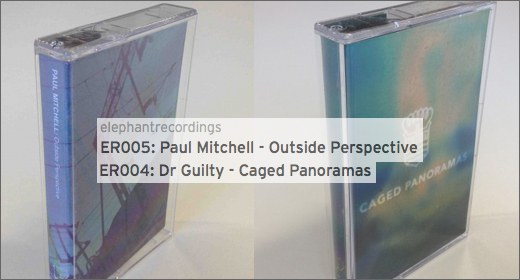Both engage with popular music, but while Logreybeam’s is more intimate—small salons and cafés—Musette’s is music intended for big public spaces—dancehalls, radio, office tower lobbies and shopping plazas. Either way, both have captured something essential about whiling away the twentieth century.
 As his dandelion-coloured debut album Datum showed, Musette is a romantic fool. He has an ear for the light but pregnant detail, borne like a vapor on the summer air. And for his sophomore release, he´s come up with a great concept: According to the press notice, Musette (Joel Danell of Stockholm) recorded the album on a cache of reel-to-reel tapes from the fifties and sixties, whose previous content was impossible to completely erase and which bleeds into the new music.
As his dandelion-coloured debut album Datum showed, Musette is a romantic fool. He has an ear for the light but pregnant detail, borne like a vapor on the summer air. And for his sophomore release, he´s come up with a great concept: According to the press notice, Musette (Joel Danell of Stockholm) recorded the album on a cache of reel-to-reel tapes from the fifties and sixties, whose previous content was impossible to completely erase and which bleeds into the new music.
Sounds to me like a rascally ruse, but okay, I´ll bite. Drape Me in Velvet is a mint Ladurée macaron of an album, a sweet confection lovingly prepared by a precocious pâtissier. Almost every light musical moment of the twentieth century is served up for our delectation—kitsch Hollywood glamour, moon over Miami surf, easy listening, bachelor pad seduction soundtracks, roller-rink waltzes, a day at the circus, a night at the soap opera. And a Swiss cuckoo clock. The velvety drape is pulled back to reveal a vaudevillian behind the romantic, one with a keen sense of melody, texture and humour.
The finale, “Fine,” a solo piano piece with a creaky violin coda, makes for the perfect segue into the hungover “Prologue” to Logreybeam‘s new long-player, Perhaps. While Drape Me in Velvet features a host of guest musicians, Gabriel Morley is a one-man palm court orchestra splitting its time between late Victorian London and fin-de-siècle Prague, Vienna or Budapest, with a stopover in Disneyland—”My Own Home” from The Jungle Book in a haunting piano and clarinet duet. Morley is a wide-ranging, electronic experimentalist, but he also composes for acoustic instruments and here, he tests out a small collection of clarinets, accordion, glockenspiel, cello, and piano on dreamy miniatures redolent of that time and those places, at least in the fairy light of imagined memory. His understated but impassioned clarinet playing is particularly memorable. Hungarian gypsy dances, moody chansons of the demimonde, minuets for sad Mexican toreadors. His closing “Epilogue” sounds like a well-known, classic melody after only a few seconds. Where Danell is witty, skilled and has the gift of concept, Morley is an affecting player and stellar arranger.
Both albums are mellow and sweet—Morley melancholy, Danell puckish—and they are both wonderful listens. Both bear a single blemish, Musette’s traumatizing electric guitar on “Horse Thougths” and Logreybeam’s “This Torment and This Thought”—thoughts they really ought to have kept to themselves. While their temporal axes may not cross, their elegiac nostalgia bears strong family resemblances. Both engage with popular music, but while Logreybeam’s is more intimate—small salons and cafés—Musette’s is music intended for big public spaces—dancehalls, radio, office tower lobbies and shopping plazas. Either way, both have captured something essential about whiling away the twentieth century.
Musette’s Drape Me In Velvet is available on Häpna.
Logreybeam’s Perhaps is available on Les Enregistrements Variables.
[soundcloud url=”http://api.soundcloud.com/tracks/39790092″ width=”100%” height=”166″ params=”auto_play=false&show_artwork=false&color=000000″ iframe=”true” /]
[soundcloud url=”http://api.soundcloud.com/tracks/13181083″ width=”100%” height=”166″ params=”auto_play=false&show_artwork=false&color=000000″ iframe=”true” /]


















![Ndorfik & madebyitself :: Solos EP (People Can Listen) — [concise]](https://igloomag.com/wp/wp-content/uploads/2025/04/ndorfik-madebyitself-solos_feat-75x75.jpg)








